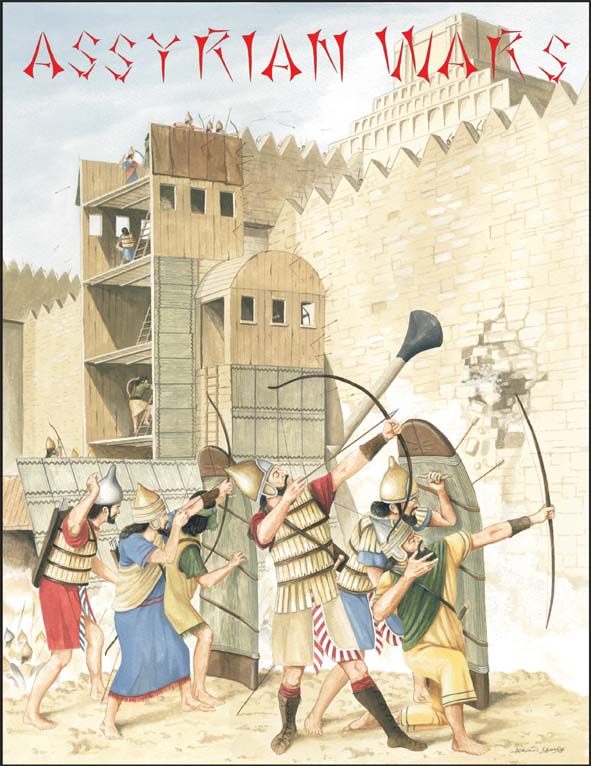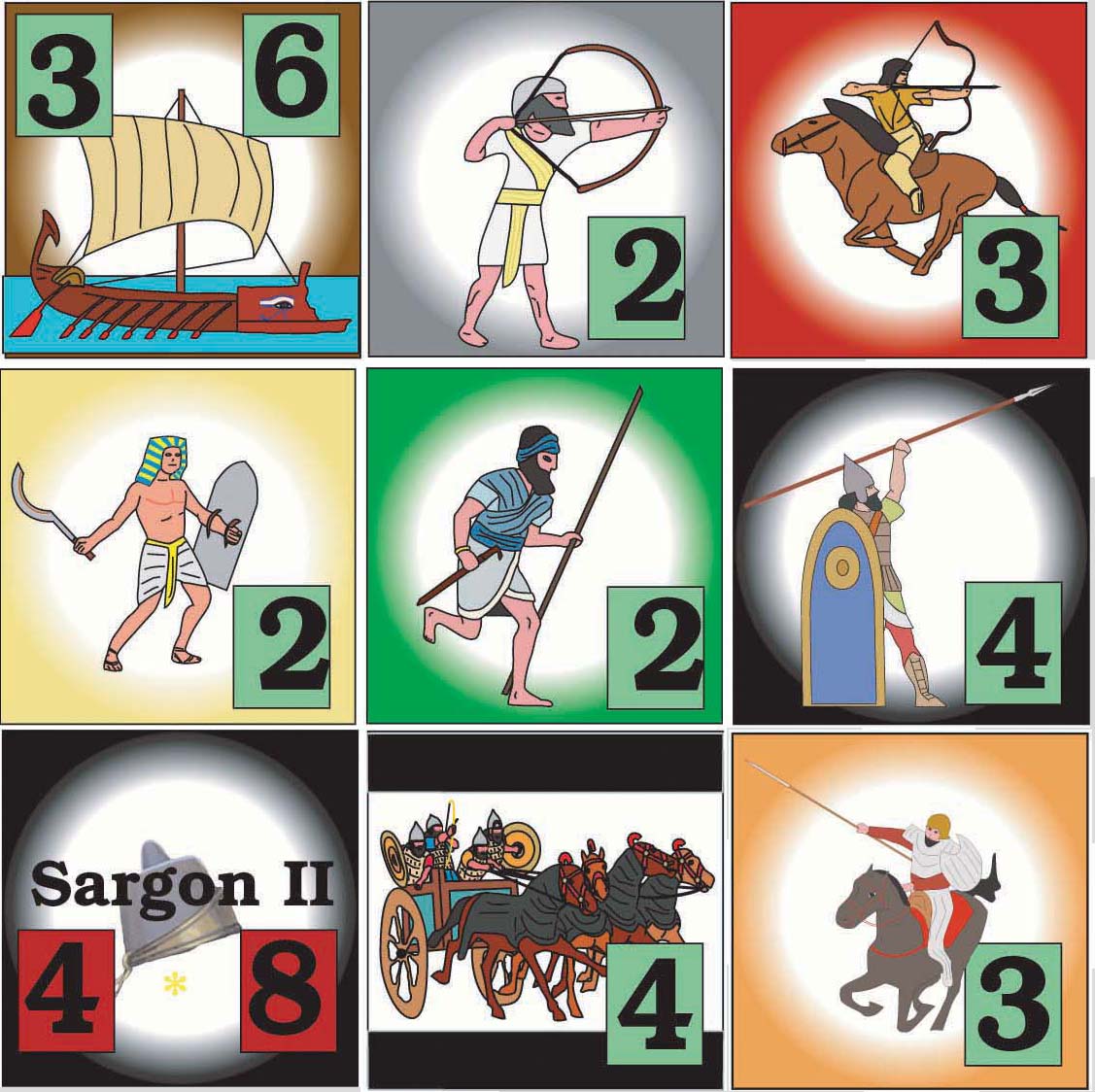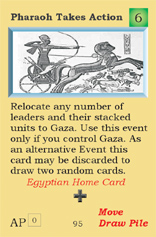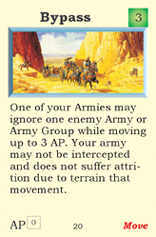A First Look at Assyrian Wars
This is not meant to be an in-depth review of UGG's "Assyrian Wars," but rather a basic look at the game based on two games.

The basic rules were not overly complex and seemed to be a rather clean translation with minimal spelling and grammar errors. However, we were a bit put off by the mixing of the advanced and basic rules. It may just be personal preference, but in our experience, the advanced rules belong completely in the back of the book for clarity. We played with a blend of advanced and basic rules for our first outing and we were quite satisfied. (most of the advanced rules deal with game economics, tribute payment, or add combat flavor)
 The counters shown here represent the various types of units. (We did not
experience naval battle in the either of our games, so I'll ignore the ship).
Next to the galley, is the archer unit. When combat begins, archers may
fire first taking out some enemy units (or reducing their strength) BEFORE normal combat takes place(along with chariots and mounted archers) but then they will take no
further part in the melee combat which follows. Or they can fight in the
melee phase as well. The archers shown above are a strength of 2 and cause 1
enemy casualty for every 1 or 2 rolled on a six-sided die. The mounted
Archers would do damage on a 1, 2, or 3. And so on with the rest of the
units. However, the Heavy units (the 4's) not only hit on 1-4's, but
if they roll the number 2 it causes a "kill" which means it causes 2 hits.
The counters shown here represent the various types of units. (We did not
experience naval battle in the either of our games, so I'll ignore the ship).
Next to the galley, is the archer unit. When combat begins, archers may
fire first taking out some enemy units (or reducing their strength) BEFORE normal combat takes place(along with chariots and mounted archers) but then they will take no
further part in the melee combat which follows. Or they can fight in the
melee phase as well. The archers shown above are a strength of 2 and cause 1
enemy casualty for every 1 or 2 rolled on a six-sided die. The mounted
Archers would do damage on a 1, 2, or 3. And so on with the rest of the
units. However, the Heavy units (the 4's) not only hit on 1-4's, but
if they roll the number 2 it causes a "kill" which means it causes 2 hits.
The leader counter shown, Sargon II , indicates that he can command up to 8 units in battle (more if accompanied by a subordinate leader in an army group) and gains an additional 4 Combat dice (which hit on 1's-3's). Other combat dice might be added for terrain or other factors.



The sample Assyrian Home card is a sample of a battle card. (It may also be used for the 6 action points on the top right corner).. the AP # at the bottom left indicates that it COSTS 6 action points to play this as the battle event. In the right battle, this card can be rather devastating. By far, the Assyrians are the big boys on the block. They have the most home cards, cards, economic strongholds, etc. in the game. The problem is that everyone is out to get Assyria, much as in GMT's "Napoleonic Wars" everyone starts out to destroy the player representing France. With the exception of their home cards, players will draw cards from a common deck.
The core of the game is built on Action points which are gained by playing a card with the "green" action points, or using the action points (based on economy) that you gain at the beginning of each impulse. Players should carefully divide their action points between moving and fighting and building units. The Assyrian player is almost forced to come and fight immediately to keep his opponents from getting strong enough to topple his mighty empire. In my second game, I managed to take Assyria deep into Babylonia and crush the rebellious army which refused to submit to the Assyrian demand for tribute. This is pretty much necessary early in the game if Assyria is to survive. Players also must choose whether to pillage or not, affecting the area that they have under siege.
The game plays a lot like Napoleonic Wars and fans of GMT's card
driven games will be impressed. GMT carries this title on their website
for $66.00.
Bouldergames.com offers it for $42.80. This game will make a great
addition to your card-driven wargame collection. At first play, I was very
impressed with the depth and playability of this title.
Further, there are sections of the rules which point readers to another section only to be pointed back to the first section.
I believe that the game, played as the designer intended is probably a very, very good game. However, determining how the designer expects the players to actually play the game is as difficult as completing a Rubix cube. I look forward to help files, explanations, etc. offered via www.boardgamegeek.com as well as consimworld. Until that day, Assyrian Wars will have to sit onthe shelf, or become the object of an in depth rules study that I am usually not forgiving enough to offer a game with confusing/conflicting rules. However, there seems to be enough of a game here that I might just try and figure it out.